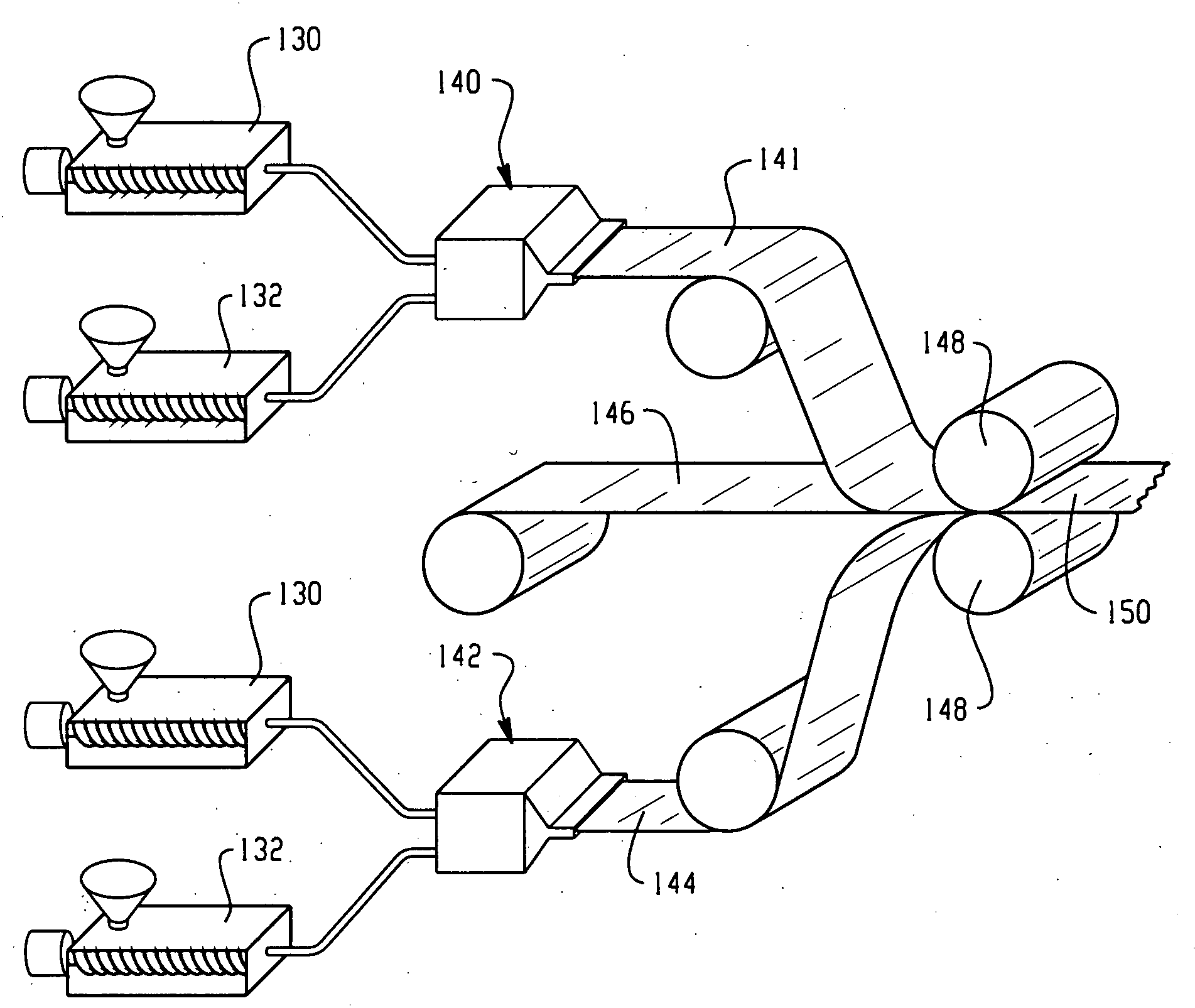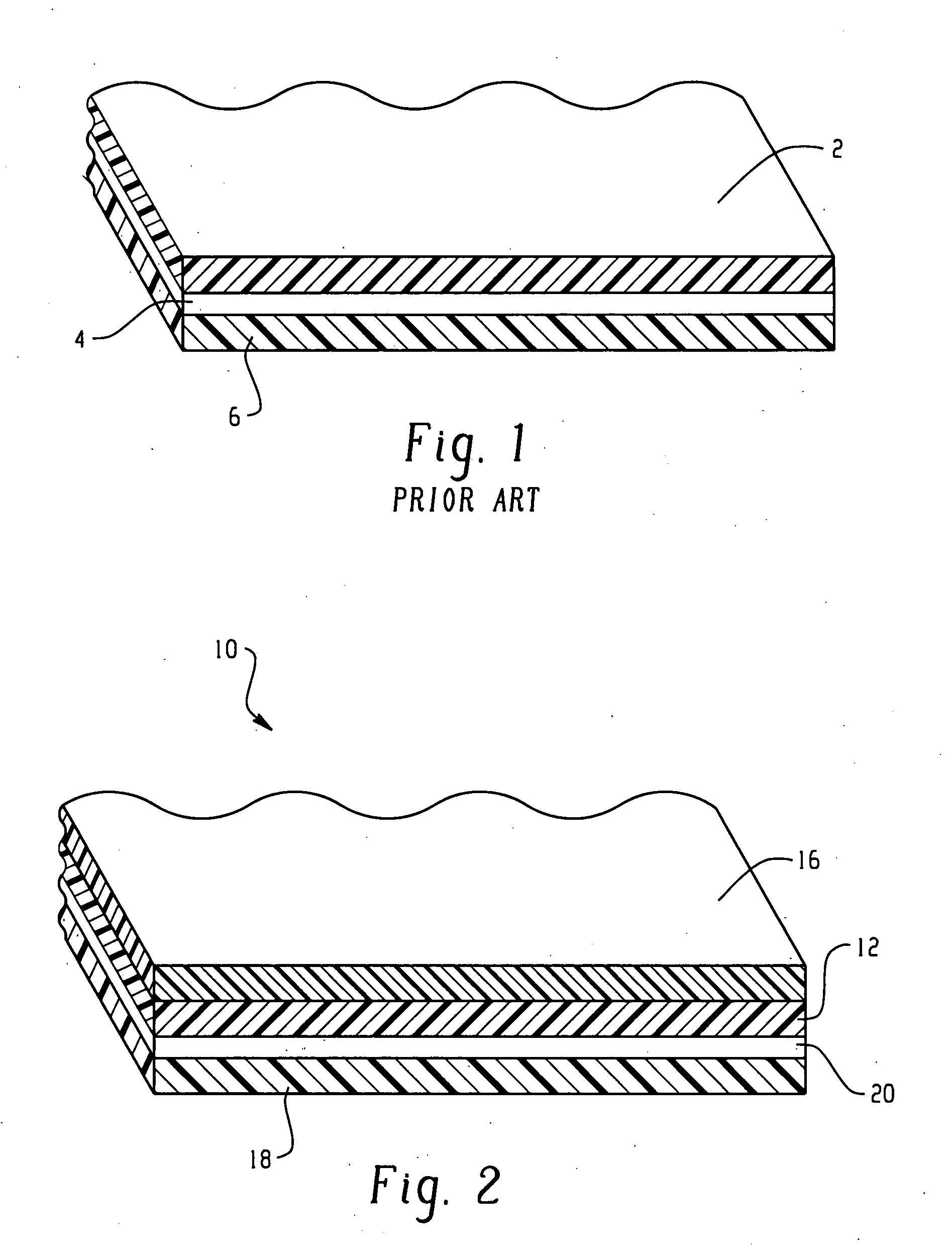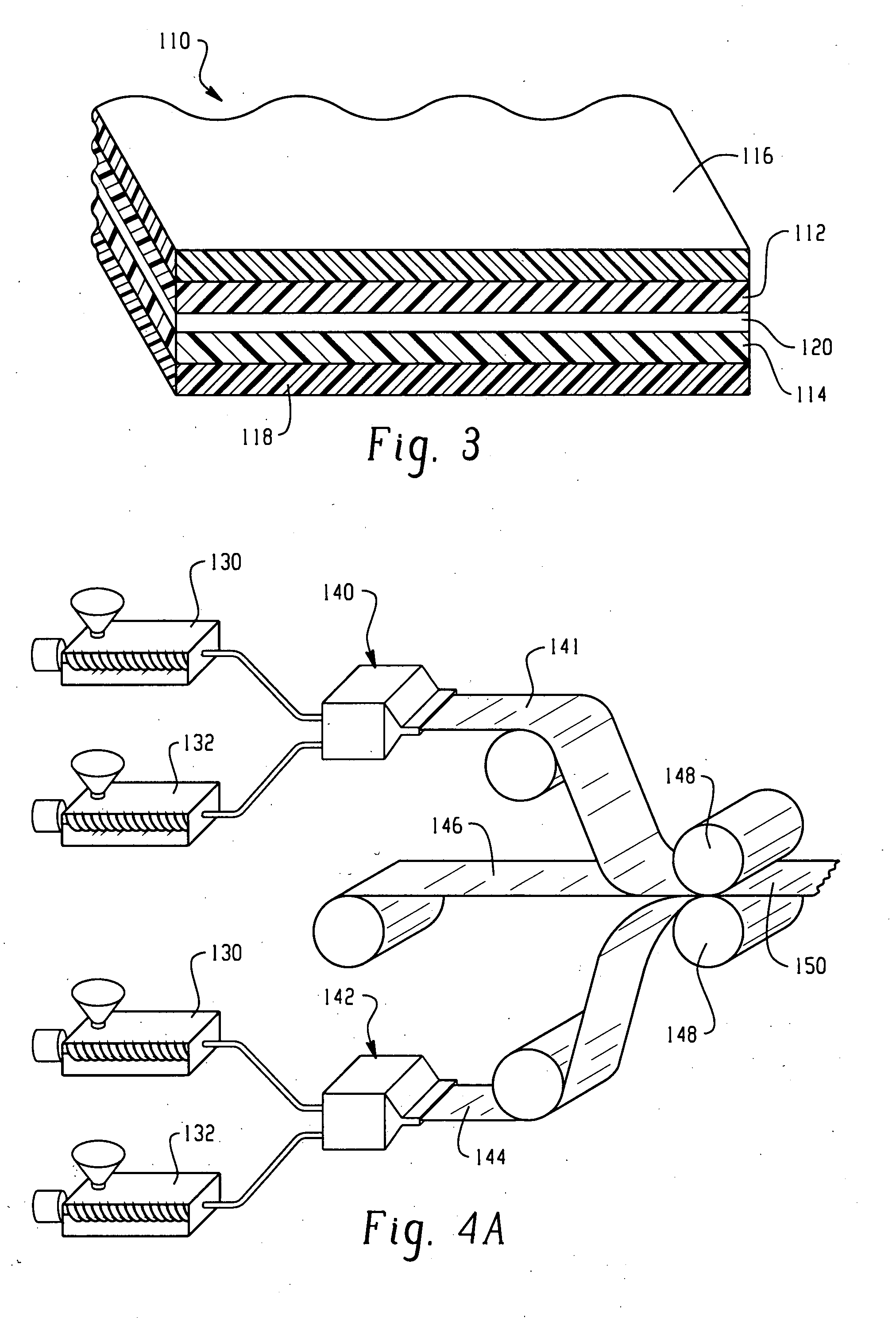Co-extrusion process for preparing roofing membranes
a technology of roofing membrane and coextrusion process, which is applied in the direction of chemistry apparatus and processes, roof coverings using flexible materials, synthetic resin layered products, etc., can solve the problems of seam peeling back under severe stress, lack of adhesion of epdm, especially cured epdm, and difficulty in production
- Summary
- Abstract
- Description
- Claims
- Application Information
AI Technical Summary
Benefits of technology
Problems solved by technology
Method used
Image
Examples
example
[0084]A sample 4-layer membrane made in accordance with the teachings of the present embodiments comprising ADFLEX TPO laminated onto a scrim reinforcement in accordance with the formulation set out in Table 2 was produced. The numbers are the weight percent of each component in the layers. The mechanical properties of this membrane were better than a conventional 2-ply TPO membrane known by those skilled in the art having the same grade of ADFLEX on both sides of a standard polypropylene scrim.
TABLE 2Upper InnerBottomComponentCap LayerLayerInner LayerCore LayerTPO Resin51.5085.0085.0085.50Phenolic0.150.10AntioxidantPhosphate0.400.30AntioxidantHALS 10.15HALS 20.15Struktol TR-0160.150.20Vertex HST38.5012.50Kronos 21605.001.00Firebrake ZB4.00Wollastonite15.0015.00Carbon Black0.40TOTAL:100.00%100.00%100.00%100.00%HALS1 (hindered amine short term UV light stabilizer): Tinuvin 770 from Ciba Specialty Chem.HALS2 (long term UV stabilizer): Tinuvin 622 from Ciba Specialty Chem.TR-016 (calci...
PUM
| Property | Measurement | Unit |
|---|---|---|
| Length | aaaaa | aaaaa |
| Length | aaaaa | aaaaa |
| Length | aaaaa | aaaaa |
Abstract
Description
Claims
Application Information
 Login to View More
Login to View More - R&D
- Intellectual Property
- Life Sciences
- Materials
- Tech Scout
- Unparalleled Data Quality
- Higher Quality Content
- 60% Fewer Hallucinations
Browse by: Latest US Patents, China's latest patents, Technical Efficacy Thesaurus, Application Domain, Technology Topic, Popular Technical Reports.
© 2025 PatSnap. All rights reserved.Legal|Privacy policy|Modern Slavery Act Transparency Statement|Sitemap|About US| Contact US: help@patsnap.com



